![]()
![]() Selected
WW2 70th Anniversaries this month:
Selected
WW2 70th Anniversaries this month:
Between 2009 and 2015, I have set myself a general modelling theme that marks selected 70th Anniversaries from WW2.
|
Oblique
aerial view of ruined residential and commercial buildings south of
the Stadtpark (seen at upper right) in the Eilbek district of
Hamburg, Germany. These were among the 16,000 multi-storeyed
apartment buildings destroyed by the firestorm which developed during
the raid by Bomber Command on the night of 27/28 July 1943. |
|
Vought-Sikorsky
Kingfisher OS2U
765
Sqn Fleet Air Arm, RNAS Sandbanks, Poole 1943
Airfix 1/72 - with Aeromaster decals.
The Kingfisher entered USN service as an observation scout aircraft in 1940,but also saw widespread service as a search and rescue aircraft. Over 100 were supplied to the Royal Navy from the summer of 1942 under lend-lease arrangements.
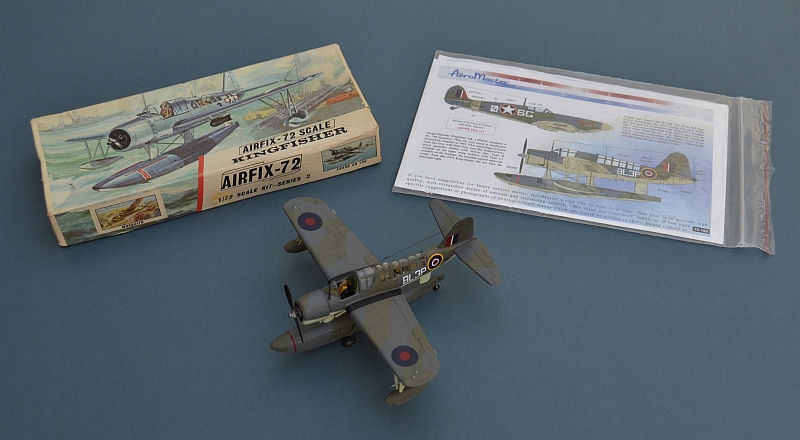
Able to fly from either land (with a conventional fixed undercarriage) or from catapult equipped ships at sea (when fitted with floats), Fleet Air Arm Kingfishers were operated from British Merchant Cruisers in the South Atlantic and Eastern Fleet, as well as being used as trainers in the West Indies and at home.
Powered by a P&W Wasp Junior radial engine which gave the seaplane a top speed of 150+ knots, the Kingfisher was capable of carrying 500lb of bombs in racks beneath each wing.
The old Airfix Kingfisher kit was first released in 1967 and very highly thought of in its time. Mine is an early issue in a T3 box which means it is very crisply moulded in dark blue plastic with a very good fit across most of the parts and minimal flash.
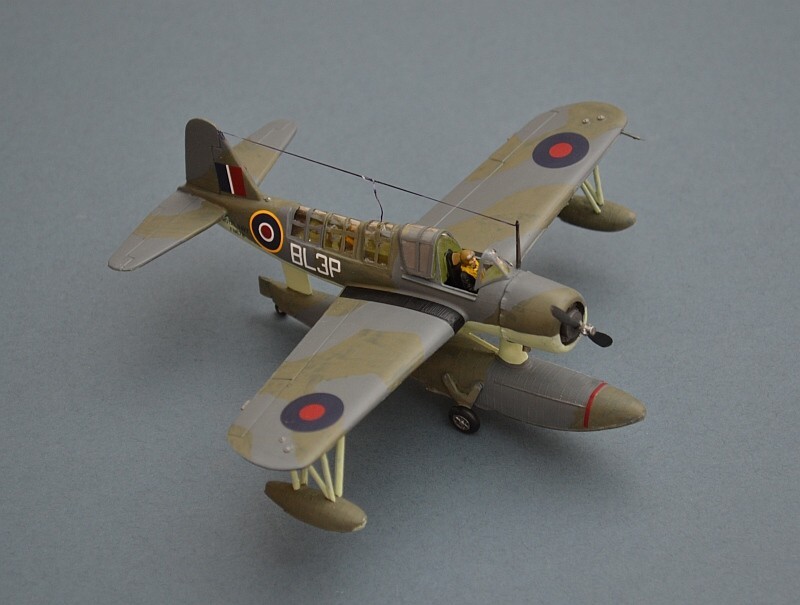
The kit builds easily and quickly, and whilst some parts (mainly the float assemblies) are a little fiddly, there is nothing that care can't address. I added a little scratch detail in the after cockpit which is very bare and fitted the two pilot figures to fill the gaps.
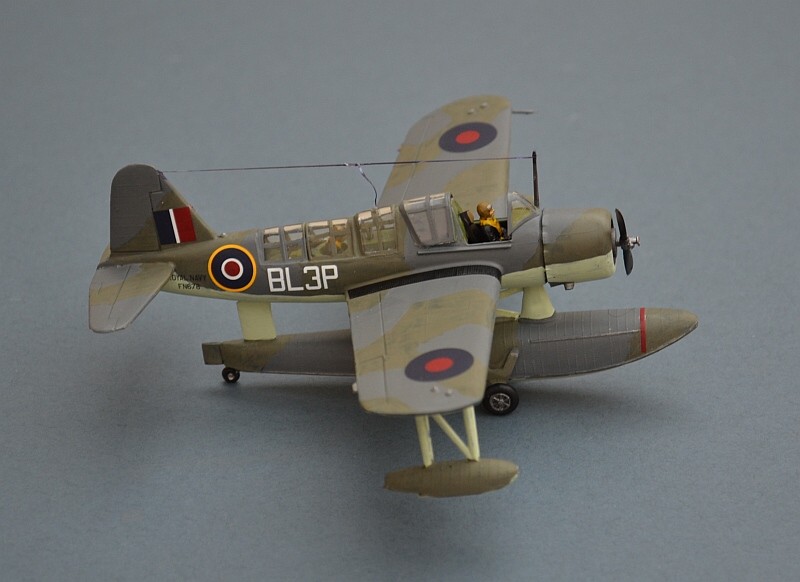
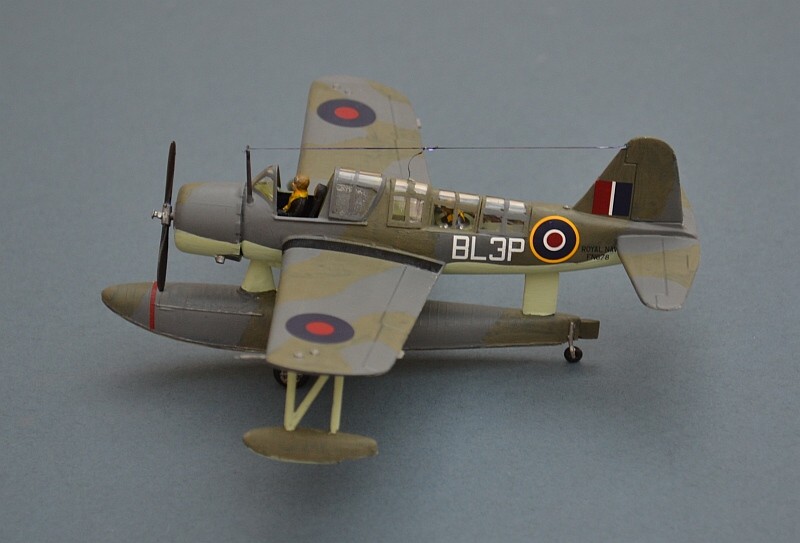
The transparencies gave me a little grief since they do not fit particularly well and it is not immediately obvious in which order the rear set should be fitted.
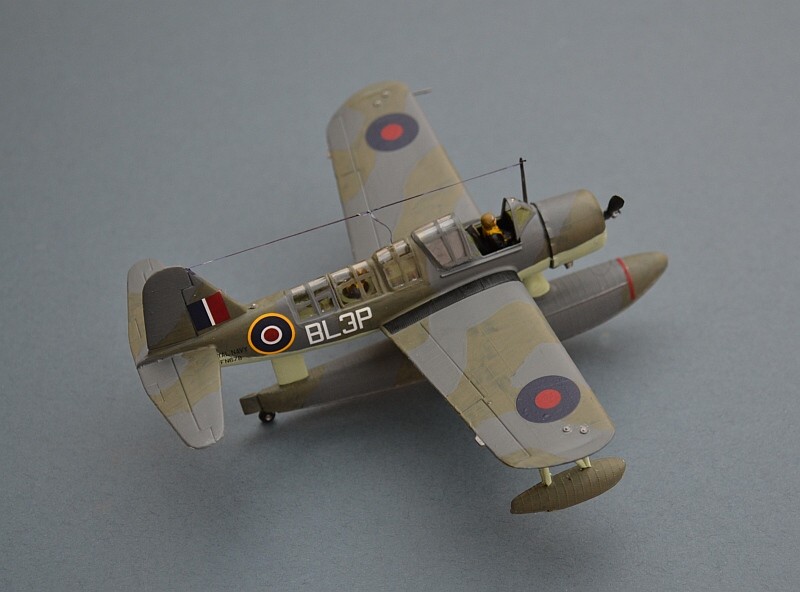
Airfix provide 3 options for the undercarriage; the fixed land based undercarriage, simple floats or floats with beaching gear attached. I chose the latter for this build in order to give the model something to sit on! Decals come from the Aeromaster Fleet Air Arm Part 1 sheet, for a training aircraft at Poole 70 years ago. Rather strangely, Aeromaster attribute it to 768 Sqn, but I am satisfied that this is wrong and it should be 765 Sqn.
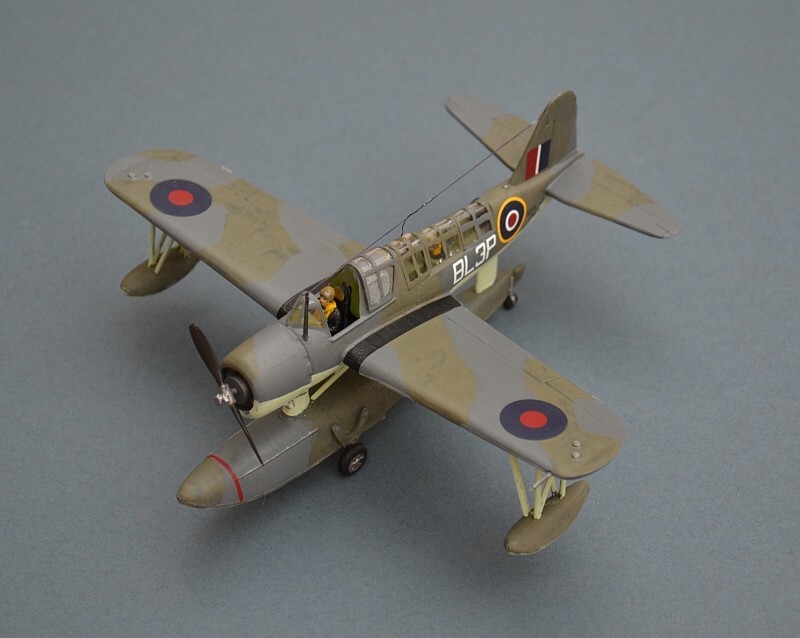
This kit has recently been re-released by Airfix with new transfers, including some for a land based aircraft of the British East Indies fleet. I don't know how well the mould has held up over the years, but if it is still as well fitting as the original then it comes highly recommended!
.jpg)
Hoisting
in the Vought-Sikorsky Kingfisher on board HMS PEGASUS
during
catapult training for Fleet Air Arm pilots at Lamlash, Scotland.
©
Crown Copyright IWM (A 12046)
Link to more WW2 Fleet Air Arm aircraft on my RN Props Pages
F3 Wing, Malmen (Linkoping), Royal Swedish Air Force, 1963
Matchbox 1/72.
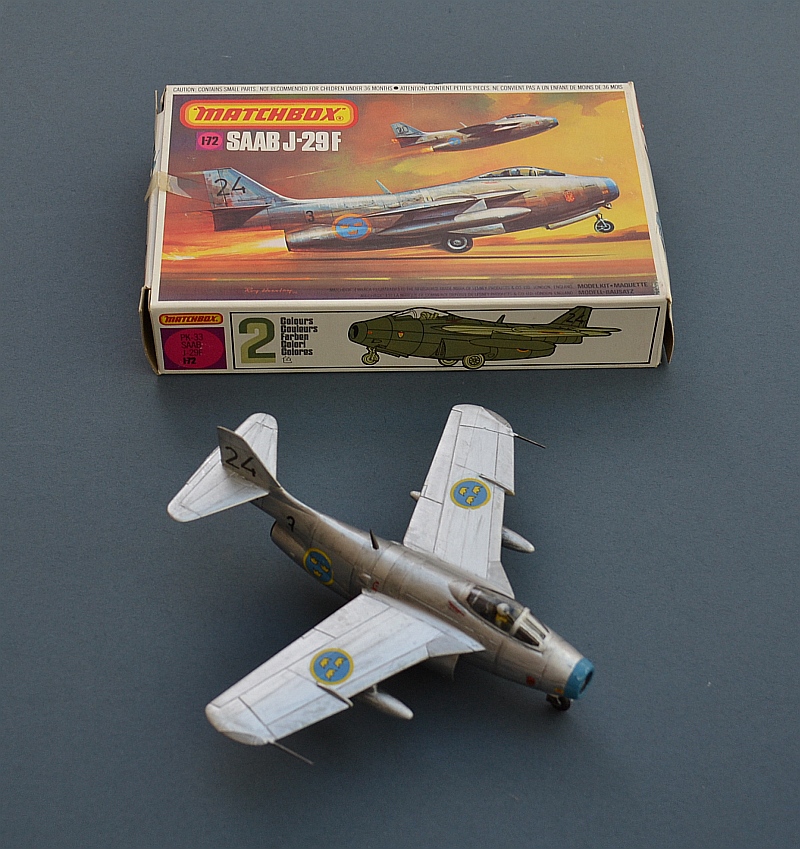
The Saab J-29 first flew in the early 1950s and continued in front-line service up until the 1970s. Based on WW2 German swept wing developments, the J-20, or Flygande Tunnan (flying barrel) was fast and agile, with power provided by a Swedish built variant of the DeHavilland Ghost turbojet. A total of 661 Tunnans were built, making it the largest production run of any Saab aircraft. In 1954 it briefly held the world air speed record with a verified 607 Mph over a 500km closed circuit course.
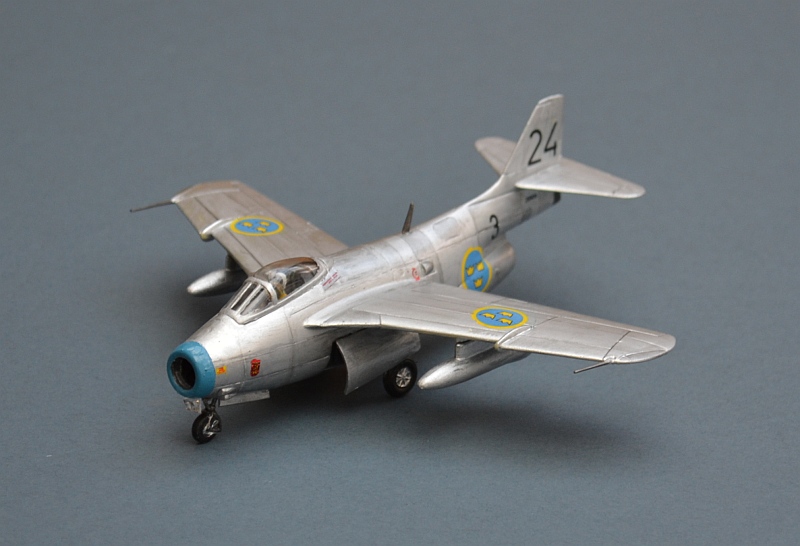
The Tunnan's early crash record was poor, due to the advanced and demanding nature of the jet engines and swept wings. As a result the Swedish Air Force purchased twin seat De Havilland Vampire T.11s to train their J-29 pilots.
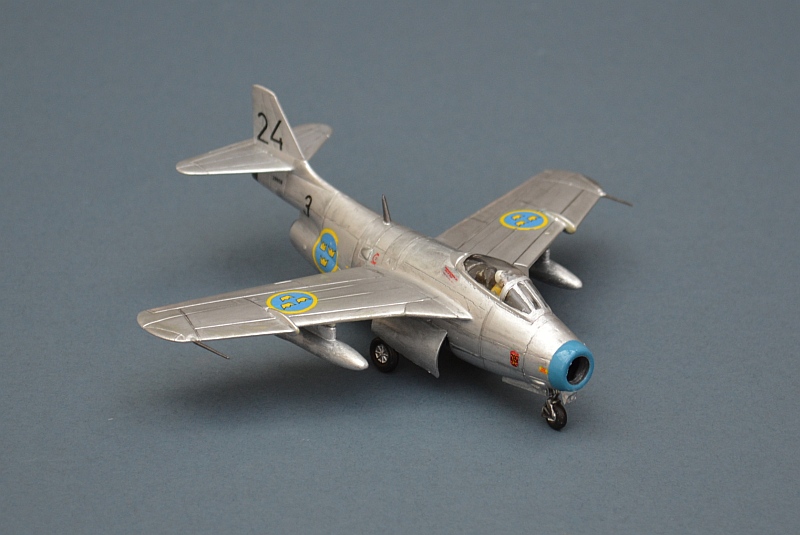
Swedish Tunnans saw combat service in the Congo from 1961 to 1964, flying ground attack missions in support of UN peacekeeping forces. The aircraft were rated very highly by those who saw them, with their performance and availability at least the match of any of the aircraft fielded by the major powers. The final F variant of the J-29 introduced an afterburning Ghost engine, plus a dogtooth wing to improve maneuverability and from 1963, the capability to carry AIM 9B Sidewinder air to air missiles on wing pylons.
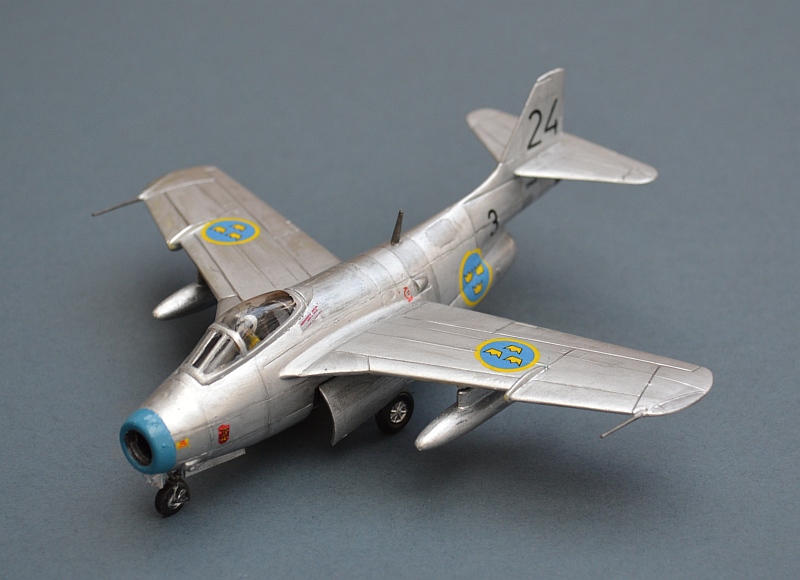
Its Swedish month again! The pugnacious barrel shaped Saab Tunnan has always appealed to me, so I recently acquired this kit to add to my early Cold War jets and my other Saabs. The kit is very basic (the Heller/Airfix kit may be better) and par for the course with Matchbox, the engraved panel lines are very deep and toy-like.
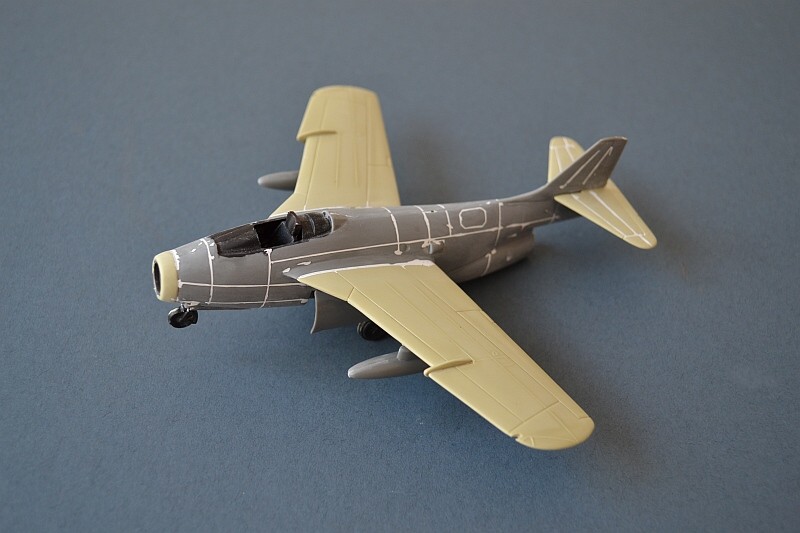
Filling the deep Matchbox panel lines with Tippex
I decided I couldn't live with this last feature, so set about filling all of the trenches using Tippex as filler. This is an approach I used with my Hunter T8M conversion and is very effective; a thorough sand down after the Tippex has dried leaves much shallower lines. The rest of the detail overall is rather crude but buildability, moulding detail and fit are very good, although there are some very obvious shortfalls in the poorly detailed jet pipe and gaping see through jet intake.
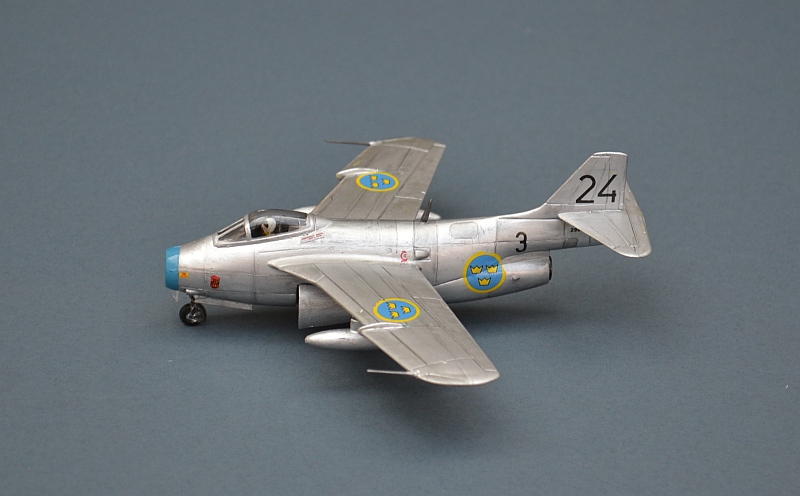
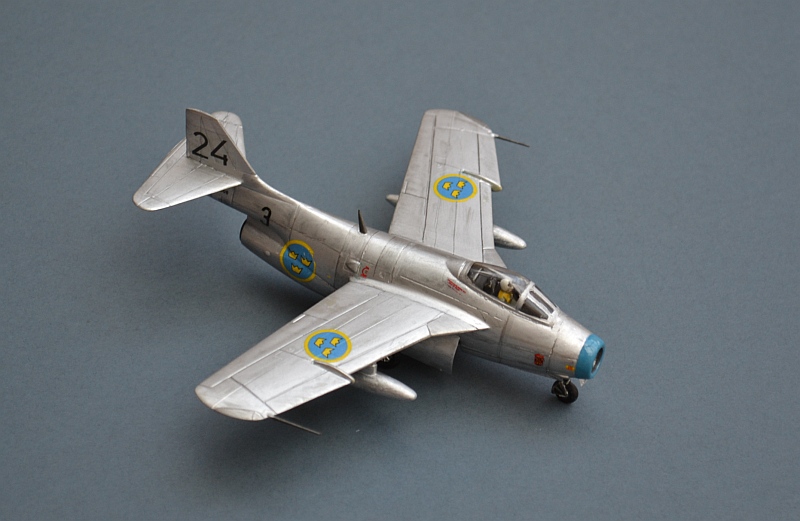
This is a fairly late Matchbox issue that first appeared in 1979, then was reissued in 1982. As such it shows the slightly more developed approach to later Matchbox kits, with a fair attempt at cockpit detail and gear bays. Although they have different box-art, decals in both issues cover a Swedish aircraft from F3 Wing in 1960 and an Austrian aircraft of 2 Jagdbomberstaffell in 1963, both in natural metal finish, although there are many other potential alternatives, including the camouflaged Congo-based aircraft.
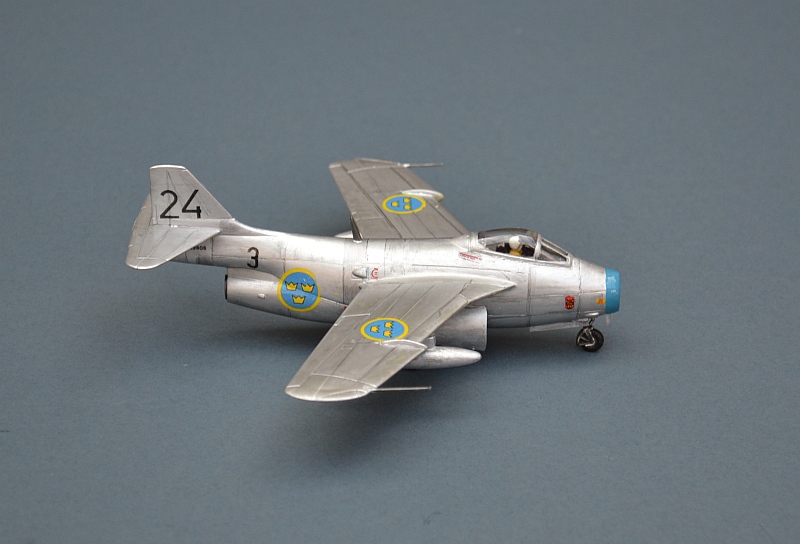
The kit is very definitely a tail-sitter, but the nose intake leaves zero space for the modeller to insert any weight. As an alternative, I inserted a small prop under the rear fuselage using a dressmaker's pin (with a suitably safe plastic "blob" end.
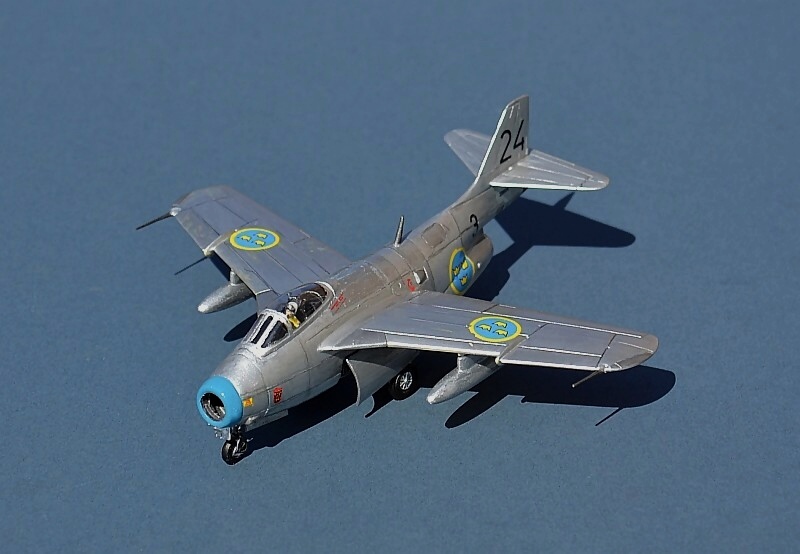
To sum up, this is a very basic kit of an interesting, successful and unusual Cold-War aircraft, but it builds easily, provides the requisite modelling fun and makes an interesting addition to my collection.
Link to more Swedish jets on my Friends & Allies Pages
Link to previous month Link to Next Month
www.gengriz.co.uk
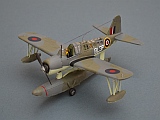
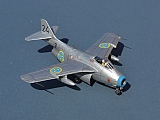
.jpg)